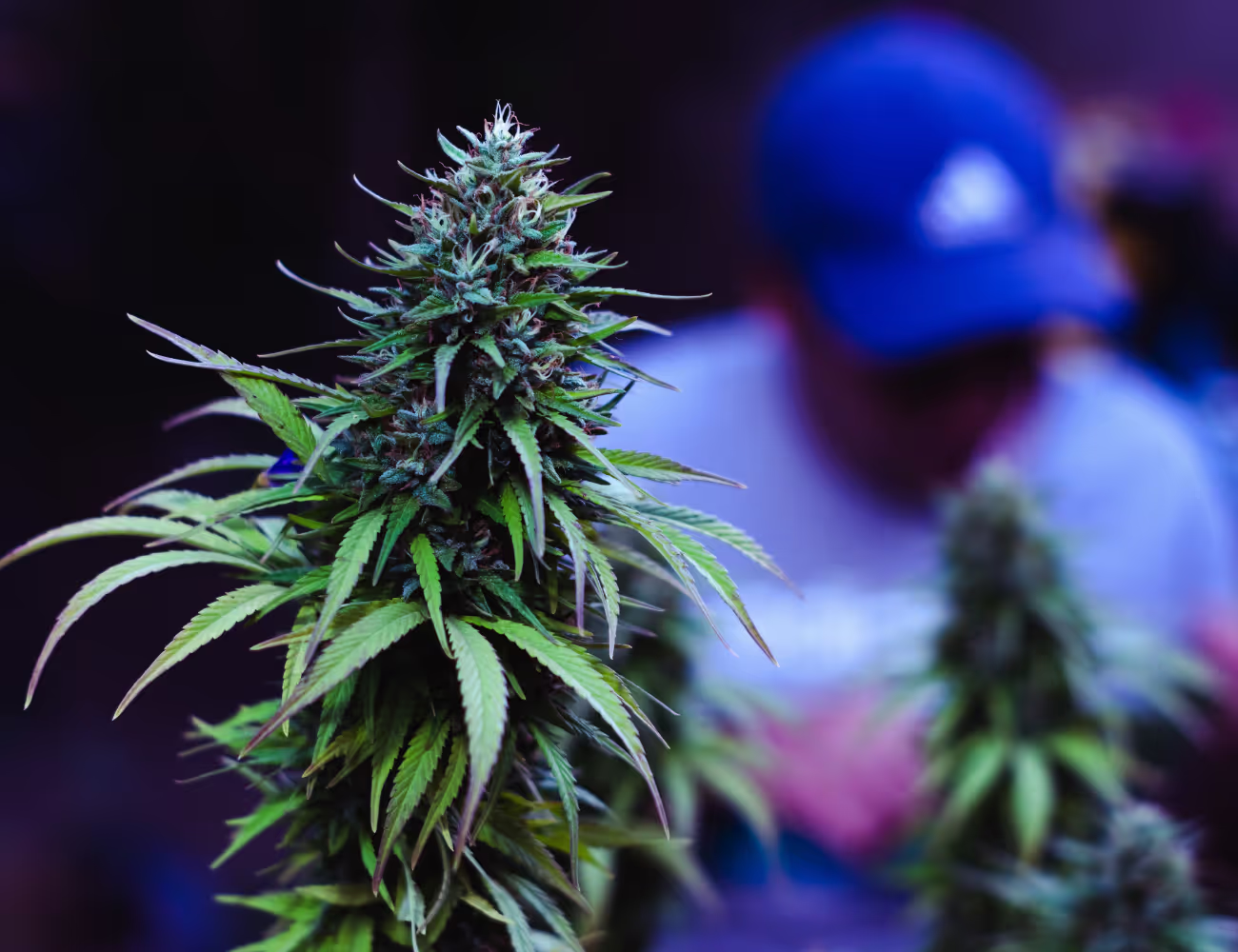.png)
DAILY DEALS
Friendly budtenders
HUGE SELECTION
TOP BRANDS
DAILY DEALS
50% Off FUN FRIDAYS
THC-INFUSED BEATS
100% VIBE-TESTED
THC-INFUSED BEATS
100% VIBE-TESTED
THC-INFUSED BEATS
100% VIBE-TESTED
THC-INFUSED BEATS
100% VIBE-TESTED
THC-INFUSED BEATS
100% VIBE-TESTED
THC-INFUSED BEATS
100% VIBE-TESTED
THC-INFUSED BEATS
100% VIBE-TESTED
DAILY DEALS
Friendly budtenders
HUGE SELECTION
TOP BRANDS
DAILY DEALS
50% Off FUN FRIDAYS
THC-INFUSED BEATS
100% VIBE-TESTED
THC-INFUSED BEATS
100% VIBE-TESTED
THC-INFUSED BEATS
100% VIBE-TESTED
THC-INFUSED BEATS
100% VIBE-TESTED
THC-INFUSED BEATS
100% VIBE-TESTED
THC-INFUSED BEATS
100% VIBE-TESTED
THC-INFUSED BEATS
100% VIBE-TESTED

Let’s face it, when it comes to cannabis, we all have our favorites. But have you ever paused mid-sesh and thought “Was this bud grown under LEDs or sunshine?” No? Well, now you will.
Welcome to the ultimate showdown of growing styles: indoor vs. outdoor weed. From picture-perfect nugs to earthy sun-grown giants, how your flower is cultivated plays a huge role in how it smells, tastes, and hits. Whether you're team terpene or team value, this guide will break down the key differences to help you find your perfect match.
What Does "Indoor Grown" Cannabis Mean?
Indoor cannabis is cultivated inside controlled environments. Think greenhouses or full-blown grow rooms decked out with artificial lighting, HVAC systems, and hydroponic setups. This allows growers to fine-tune nearly every variable: light cycles, temperature, humidity, even airflow.
Pros of Indoor Grown Weed:
- Aesthetic Appeal: Indoor buds are often dense, frosty, and camera-ready.
- Year-Round Cultivation: No waiting for spring to plant or fall to harvest.
- Precise Control: Allows growers to create “perfect” conditions for top-tier genetics.
What Is Outdoor Grown Weed?
Outdoor weed is cultivated under the sun, with natural soil and weather patterns playing major roles. Think of it like free-range cannabis. It’s exposed to the full spectrum of sunlight, fluctuating temps, and the rhythm of the seasons.
Pros of Outdoor Grown Weed:
- Eco-Friendly: Less energy usage = a greener footprint.
- Bigger Yields: Sunshine and open space let plants grow huge.
- Budget-Friendly: Fewer overhead costs often mean better value.
If you’re about sustainability and stretching your stash, give Halfpipe’s Sungrown Tropic Thunder a try. It brings sunny SoCal vibes in every puff.
Flavor, Aroma, and Terpene Profiles
One of the biggest differences between indoor and outdoor cannabis is how it smells and tastes. That’s largely thanks to terpenes, the aromatic compounds that give cannabis its flavor and scent.
Indoor weed often has louder, punchier terpene profiles due to environmental consistency and post-harvest care like curing. Outdoor weed can offer more complex and earthy notes, influenced by the soil and natural surroundings.
Curious to learn more about what shapes your strain’s scent? Our Cannabis Terpenes Guide is the perfect place to start.
Appearance: Buds Under the Microscope
Let’s talk looks. If you’re someone who shops with your eyes first, indoor flower often wins the beauty contest:
Indoor buds tend to be smaller, denser, and covered in trichomes. They're also trimmed with machine-like precision. Outdoor buds may appear more "wild" with looser structure, a bit leafier, and darker hues from sun exposure.
But don’t judge a nug by its cover! Some of the most flavorful and powerful flower out there comes from outdoor or sun-assisted grows.
Price Point: Bang for Your Bud
Here’s where outdoor cannabis really shines. Because it skips the massive energy bills and expensive equipment needed for indoor grows, outdoor weed is generally more affordable.
That doesn’t mean you’re getting “lesser” flower. It just means the grower leaned into the sun rather than studio lighting.
Sustainability Showdown
If you're eco-conscious, this part’s for you. Indoor grows requires electricity, water, and synthetic inputs. In contrast, outdoor cannabis grows naturally with help from the sun and rain. Many brands are leaning into sun-grown methods not just for sustainability but also to bring back old-school cultivation roots.
The Hybrid Approach: Greenhouse Grows
Of course, there’s a middle path. Greenhouse-grown cannabis blends the best of both worlds. Natural sunlight with some environmental controls. The result? Bud that’s flavorful, potent, and oftentimes more affordable than indoor but more consistent than full-sun grows.
Some products clearly label themselves as greenhouse-grown. Ask your budtender at our Sacramento Eastside weed dispensary if you're curious to try one.
Which Should You Choose?
There’s no wrong answer - just different vibes:
- Want eye candy, bold flavors, and terpene fireworks? Go for indoor.
- Looking to stock up without breaking the bank? Outdoor has your back.
- Into sustainability? Sun-grown is a solid, planet-friendly pick.
- Can’t decide? Try both and see what your taste buds say.
Want to level up your strain exploration? Start with this Cannabis Strain Mixing Guide and discover how hybrid experiences can elevate your sesh.
Final Thoughts
Indoor or outdoor, greenhouse or sungrown, there’s something for every type of cannabis fan. The key is knowing what each grow style offers, so you can match your pick with your personal preferences and lifestyle. At the end of the day, it’s all about finding what feels good to you because the best cannabis experience is the one that fits your lifestyle, values, and favorite way to sesh.
Disclaimer: the information provided in this document is for informational purposes only and is not intended as a substitute for professional medical advice, diagnosis, or treatment.



.svg)




.avif)







.svg)


.svg)
.avif)